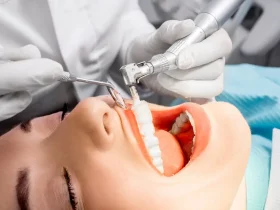Whether eligible by age or disability, many Medicare beneficiaries may require medical equipment for a particular health condition. Fortunately, Medicare Part B has a durable medical equipment (DME) benefit that covers approved equipment. Durable medical equipment is medical equipment prescribed by a physician or other medical professional for a medical reason to be used in your home and can withstand repeated use.
However, there are several forms of DME and how Medicare covers them varies.
Medicare coverage for durable medical equipment
In general, Medicare Part B covers DME at 80%, leaving you with a 20% coinsurance after you’ve met your deductible. However, depending on the DME, you may have to rent it, purchase it, or be able to choose between renting or buying. Either way, Medicare generally covers 80% of the rental or purchase cost for Medicare-approved DME.
Medicare only covers medical equipment prescribed by doctors and purchased at suppliers who are enrolled in Medicare. If your doctor or DME supplier doesn’t accept Medicare, Medicare will not cover any portion of your DME, and you will be responsible for 100% of the cost.
Assuming your DME is prescribed by and purchased from a Medicare doctor and supplier, Medicare will cover your equipment if deemed medically necessary. You should also purchase your Medicare-approved DME from a supplier who not only accepts Medicare but accepts Medicare assignment.
Accepting Medicare assignment
Doctors, suppliers, and facilities can choose to accept Medicare but not accept Medicare assignment. If this is the case, they are considered a non-participating Medicare provider. Purchasing your DME through a non-participating Medicare supplier means you may pay up to 15% more of the Medicare-approved rate for that particular item.
For example, if your DME has a Medicare-approved rate of $200, but you purchase it at a non-participating DME supplier, your coinsurance may go from $40 (20%) to $70 (20% + 15%). Finding a participating DME supplier is crucial in avoiding a nearly double coinsurance.
Common types of DME and their coverage requirements
Medicare covers many types of DME, including but not limited to blood sugar monitors, insulin pumps, hospital beds, wheelchairs, CPAP machines, and oxygen tanks. Getting Medicare coverage for many of these items is as simple as your doctor writing a prescription and proving the equipment’s medical necessity.
However, specific types of DME may have additional requirements for coverage. For example, Medicare may cover 80% of your rental fees of oxygen equipment if you meet the following criteria:
- You have been diagnosed with a severe lung diseased
- Your health is expected to improve with oxygen therapy
- Your arterial blood gas levels are within a specific range
- You’ve tried other measures, and all have failed
Oxygen equipment is an example of DME that is initially rented rather than purchased. If Medicare approves your oxygen DME, you will be able to rent your equipment for three years from your supplier. If, after three years, you still require oxygen equipment, the supplier is required to continuing providing equipment, supplies, and maintenance for an additional two years. If you still need oxygen therapy after five years, you may have to start a new 36-month rental period through a new supplier.
Another example of DME that has additional requirements is wheelchairs. Medicare won’t approve a manual wheelchair unless you can’t safely use a cane or walker, have difficulty moving throughout your home (not just outside your home), and can safely operate the wheelchair or have someone who can help.
If you can’t operate a manual wheelchair safely, Medicare may then cover a power scooter. If you can’t operate a manual wheelchair or power scooter safely, then Medicare will consider covering a power wheelchair. You’ll also need a face-to-face examination by a Medicare provider for Medicare to cover a power wheelchair.
Drugs and supplies used with medical equipment
Various types of DME are used to administer prescription drugs. If your DME is approved by Medicare and administers medication to you, then that medication is also covered under Part B at 80%. For example, if you use a Medicare-approved insulin pump, Medicare Part B will cover your insulin rather than Part D.
Medicare Part B will also cover necessary supplies used with your Medicare-approved DME. For example, blood sugar test strips are covered under Part B if your blood sugar monitor is as well.
Medicare Advantage medical equipment coverage
If you have a Medicare Advantage plan, your durable medical equipment coverage and requirements may vary from Original Medicare’s. For example, your Medicare Advantage plan may have fewer or more conditions for coverage or may charge a different copay or coinsurance for each type of DME. You’ll need to look at your plan’s Summary of Benefits to learn exactly how your plan covers DME.
Medicare and Medicare Advantage plans won’t cover medical equipment that isn’t medically necessary. For example, Medicare generally doesn’t cover shower chairs as they are often used for convenience rather than for a medical reason. In the end, if you have a medical need for durable medical equipment, Medicare will likely cover it.










